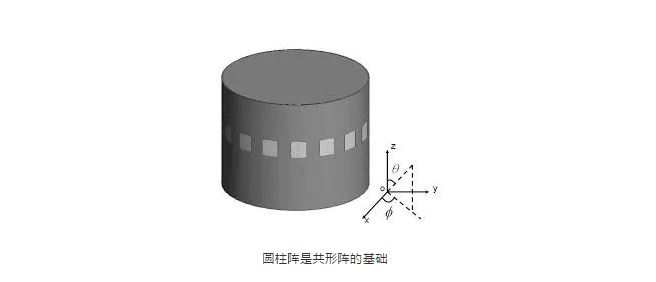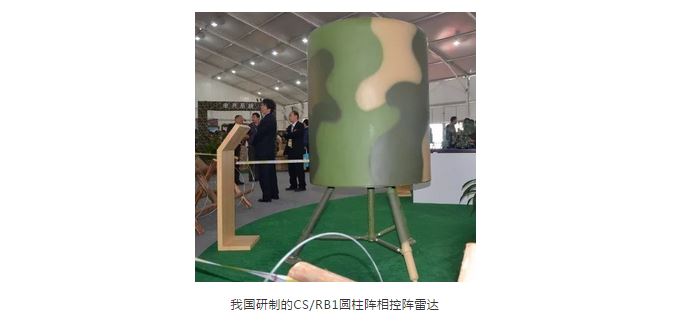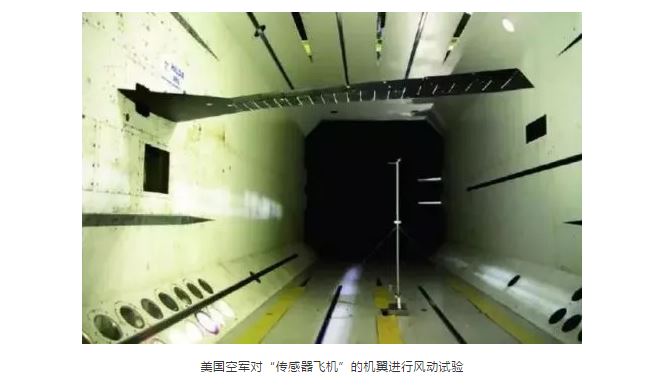Conformal array antenna is an antenna array that keeps consistent with the shape of the object. It conforms the antenna array to the shape of the carrier, which enhances the adaptability and has great advantages over planar array antenna. In modern wireless communication systems, conformal array antennas, which can conformal to the surface of high-speed carrier platforms such as aircraft, missiles and satellites, and do not destroy the configuration and aerodynamics of the carrier, have become a research hotspot in the field of antenna and an important aspect of the development of phased array radar in the new century. To. Among them, flexible conformal array antenna (hereinafter highlighted) is a more advanced conformal array antenna technology, not only can conformal with arbitrary curved surface, can dynamically adjust and adapt to changes in shape, but also for aircraft vibration and deformation caused by aerodynamic, cold and hot changes have better adaptability. At present, China, the United States, Japan are conducting related research, China has developed a cylindrical array of phased array radar and helicopter conformal antenna.
History of conformal array antenna technology
The study of conformal arrays actually began very early. In the 1930s, when radar appeared, scientists began to study circular arrays, conical arrays and other special shape antennas, which were regarded as the basis and breakthrough of conformal arrays. Since the 1980s, with the outbreak of the information revolution, the rapid development of microelectronics technology, a series of new devices and processes have laid a solid foundation for the application of conformal arrays. At present, conformal arrays have begun to be partly practical, and conformal phased array antennas have been used in various radars, such as ground, shipborne and airborne detection. Radar, electronic warfare system, communication system and so on are widely used.

Technical characteristics of conformal array antenna
The traditional phased array radar antenna usually adopts linear array or plane array. Its advantages are simple structure, easy technical processing and mature theory. Therefore, the cost and cost are low. It is widely used in phased array radar antenna. However, planar phased array antennas also have some inherent shortcomings, which limit their further development.
Determine the two parameters of radar detection distance: aperture and power. If we want to improve the detection range of radar, we must increase the aperture of radar. However, the space over the aircraft is limited, and it is difficult to find a larger space for the plane array. Thus, the conformal array appears. The most important characteristic of the conformal array is that it can conformal to the surface of the carrier. In this way, the aperture of the radar antenna can be effectively expanded. The extended detection range is another advantage of the conformal array. It can extend the scan limit of the plane phased array to the hemisphere and even the 3/4 sphere region, and during the scanning process. The performance of antennas and radars is not greatly reduced. In addition, since there is no need to install radar in the aircraft, the space inside the aircraft can be used to install other equipment and fuel, thus increasing the load of the aircraft and making full use of the limited space in the aircraft. In addition, conformal antenna can also help to improve the structural strength of the equipment, reduce volume and weight.
Compared with planar array antennas, the analysis and synthesis of conformal array antennas is more complex. Generally speaking, conformal array antenna synthesis is not only the synthesis of its pattern, but also the design of the initial stage to consider the conformal array antenna shape, array element form and its distribution. In addition, the effects of conformal carriers and mutual coupling between elements on the resonant frequency, bandwidth and polarization of the array and the array elements should be considered in the design. Therefore, the design of conformal array antenna is a complex system problem, it is difficult to have a strict and accurate solution to this problem, usually using numerical analysis method to study. At present, the commonly used numerical analysis methods are Moment Method (MOM) based on integral equation and its fast algorithm, Finite Difference Time Domain (FDTD) based on differential equation and Finite Element Method (FEM). However, the analysis of conformal array antenna moment method is usually based on the Green's function in the coordinate system conformal to the carrier platform. This method is very useful, but it is very difficult for complex platform analysis.

Research on conformal antennas in China
China began to study conformal arrays in the 1970s and 1980s, began to study conformal array antenna elements in the 1990s, completed the prototype development, began to develop conformal phased array antenna in the new century, and exhibited CS/RB1 radar for the first time at the Zhuhai Airshow in 2012. From the related pictures, it used cylindrical conformal array antenna. Phased array design, with 360-degree detection capability, working in L-band, suitable for low-air defense, rapid delivery and anti-fire operations, can be used to detect enemy mortar shells and locate their launching positions, as interception and counter-fire weapon systems of the alert and tracking radar, but also can be used to correct their mortar fire; Man-portable, can adapt to various transport aircraft, helicopter airdrop requirements, maneuverability, easy operation, deployment, suitable for rapid delivery; in the air defense system to undertake all kinds of low-altitude targets detection tasks. The appearance of CS / RB1 radar indicates that the conformal phased array radar technology in China has moved from laboratory to army and international market.

CS/RB1 cylindrical array phased array radar developed in China
The first helicopter conformal antenna has been developed successfully in China.
Recently, the first helicopter conformal antenna independently developed by China Aviation Industry Group Co. Ltd. has been tested for its electrical performance. The results show that the test results of conformal antenna conformal to expectations, marking the successful development of the first helicopter antenna in China, and will be installed in domestic helicopter models.
Research on conformal antennas in European and American countries
The advantages of conformal array antennas have been recognized by developed countries such as Europe and America for a long time. However, the existing conformal array antennas are mostly used in ground and Ship-borne Radar Antennas because they only design the conformal array into a given shape, such as cylindrical or hemispherical, passively adapt to the shape of the carrier. However, due to the complexity of the environment, the application of conformal array is more difficult.
In 1960, the Naval Aviation Command began to study conformal phased array antennas for aircraft and missile skins. In 1973, the United States developed spherical phased array antennas and circular ring phased array antennas.
The US Navy cylindrical conformal array can achieve 360 degree detection.
According to relevant information, the cylindrical conformal phased array antenna is used in the shipborne communication terminal of the US Navy Cooperative Warfare System. It consists of 96 array feeds. Each array has 10 elements connected by a microstrip antenna distribution network. The former Soviet Union has successfully developed a useful cylindrical conformal phased array antenna for air traffic control. Radar, its maximum detection range can reach 400 km, can achieve 360 degrees of detection, can grasp up to 100 batches of targets, the United States has also completed the use of optical control of the wide conformal phased array antenna development.
In 2004, the U.S. Air Force and Raytheon began research on X-band thin phased array radar, which uses conformal antennas. EADS in Europe is also developing a two-dimensional curved electronic scanning antenna for UAV testing. This kind of antenna array does not need mechanical devices. The curved antenna array is placed on the surface of the fuselage, but becomes a part of the structure of the fuselage. It not only sends and receives electromagnetic waves, but also weathered the wind and rain as well as the impact of foreign objects. The volume and weight are reduced, and the reliability of the system is improved.
The U.S. Air Force has also supported a number of conformal array antenna projects, for example, in the Structural Integration X-Band Array (SIXA) project, a 64-unit conformal array antenna was installed on the wing of the Boeing 707 aircraft, about 6 m in length, and in the Sensor Aircraft Conformal Low-Band Antenna Structure (S-CLAS) project, on the wing of the aircraft. Active phased array is installed at the leading edge to carry out conformal array radar system test. Adaptive processing can overcome the influence of fuselage deformation and wing jitter.
These two projects only study the effect of wing bending on array performance and bending compensation technology, and the closest application is the UHF conformal active phased array radar antenna manufactured specifically for this aircraft in the U.S. Air Force Sensor Craft project and integrated into the wing. The wind tunnel test has also been made into a X band conformal active phased array radar antenna 0.37m2.
Research on conformal antennas in Japan
Japan has always been a world leader in information technology and microelectronics, and the accumulation of these technologies has provided a solid foundation for the study of conformal array antenna technology. The Electronic Equipment Research Institute of Japan's original defense technology research headquarters (which has been integrated into the Department of Defense Equipment) announced the flexible conformal array antenna that it is leading the research and development in 2013. It has a great breakthrough in practicality and solved the problems faced by most conformal array antennas.
The development goal of this project in Japan is to replace the in-flight radar antenna for future aviation equipment. Its flexible conformal array antenna technology mainly realizes three points: the antenna can be bent at any angle; the antenna sensor can detect the curvature according to the bending state and automatically correct the electromagnetic wave phase; and the antenna is bent at any angle. By comparing the gain effect between curved state and plane state, the technical feasibility of automatic correction of electromagnetic wave is verified.

This kind of antenna developed by Japan is equipped with sensors, which can detect the bending curvature of the antenna, calculate the curvature radius to get the coordinates of each element, and then automatically adjust the phase of each element to form a specified direction of electromagnetic beam. In the microwave anechoic chamber, the gain effect of the flexible conformal array antenna is verified, and the electromagnetic beam is formed in the specified direction, which proves that the flexible conformal array antenna is effective to correct the electromagnetic wave.

The objective of this flexible conformal array antenna technology in Japan is to make the nose diameter larger if large aperture antenna is needed in aircraft design. The flexible antenna technology can install the antenna outside the aircraft to match the surface shape of the fuselage, replace the radar antenna in the aircraft and avoid the heat pipe inside the aircraft. And electromagnetic compatibility. The flexible conformal array antenna can adapt to any curved surface shape, and its flexible conformal array antenna is light in structure, small in weight, and has good carrying adaptability. Comparing with the conformal antenna with fixed shape, the flexible conformal antenna makes the antenna no longer need to be specially designed to suit the shape of the aircraft, and can adapt to the shape changes of the aircraft aerodynamic and thermal expansion and contraction.

New trend of flexible conformal array antenna technology
If the flexible conformal array antenna technology is mature and has a wide range of military applications, it will also change the traditional aircraft design concept. It will be of great benefit to improve the detection capability of combat systems, especially in the rapid development of stealth aviation equipment today, it has more practical significance.
Firstly, the flexible conformal array antenna can be mounted on the surfaces of different curvatures of the aviation equipment, and the aviation equipment can be designed to the optimal aerodynamic shape without additional aerodynamic cost for the installation of the antenna array. Large early warning aircraft can make full use of the surface area of the fuselage and the large wing spans to lay the antenna, which can greatly improve the detection capability, and no longer need to carry extra antennas such as "disc" or "balance beam"; or high-altitude long-endurance UAV, using flexible. The conformal array antenna can detect large aperture radar and meet the needs of wide area reconnaissance.
Secondly, the flexible conformal array antenna can not occupy the space inside the aircraft, and the free space can be used to install other equipment and fuel, so as to increase the load of the aircraft and make full use of the limited space inside the aircraft. In addition, it can also help to improve the structural strength of the equipment, reduce the volume and weight, and help to improve the aircraft carrier. Mobility and the viability of the battlefield. This is a great advantage for space-compact aeronautical equipment such as fighters or missiles. If the fighters integrate conformal array antenna on the fuselage surface instead of the plane array antenna in the aircraft, the nose space can be reserved for other more important airborne equipment, which can carry more fuel to increase the range and can carry more airborne weapons. . If the conformal array antenna is installed on the surface of the radar guided missile, the size and weight of the seeker can be reduced. The space saved in the missile body can install larger warheads or carry more fuel. It can also greatly reduce the size of the missile body to increase portability and maneuverability.
Third, the flexible conformal array antenna expands the scope of platform for situational detection. Any aircraft is easily adapted for intelligence gathering. Wings, doors or fuselages can be used as antennas. Any manned or unmanned aircraft can perform surveillance tasks without developing specialized surveillance aircraft to accommodate radar antennas.
Fourthly, conformal array antenna can not only be used for radar detection and communication, but also provide a new mode of electronic warfare operations, greatly improving the effectiveness of electronic attack. High power aperture product (HPAPD) of large conformal arrays can be used to detect enemy communications and deal with many X-band radars and a large number of shortwave communications. Experts have envisioned using conformal array antennas to wrap missile-sized unmanned combat aircraft, rapidly reaching enemy targets, generating destructive peak power at close range, thus conducting electronic attacks on enemy installations.
Comprehensive summary
Although many countries have made great breakthroughs in conformal arrays, some deep-seated problems still remain unsolved, which limits the further development of conformal arrays. For example, one of the most difficult problems in conformal arrays is to ensure that all elements of the array have the same pattern, maximum direction and uniform polarization orientation. Each antenna element is not on a single array, so the analysis and engineering implementation of conformal array is very difficult. In conformal array scanning, the on-off switching and amplitude-phase weighting of antenna elements are multi-terminal, and the power distribution and beam control of the corresponding feeder network need to be solved in real time. In addition, in conformal array, the elements in different positions have their own electrical environment. Therefore, when the antenna works, how to solve the problem of active input impedance matching needs to be solved. The key problem to be solved is that the vibration and dynamic deformation of the body have a great influence on the antenna array, which needs to be solved in practice.